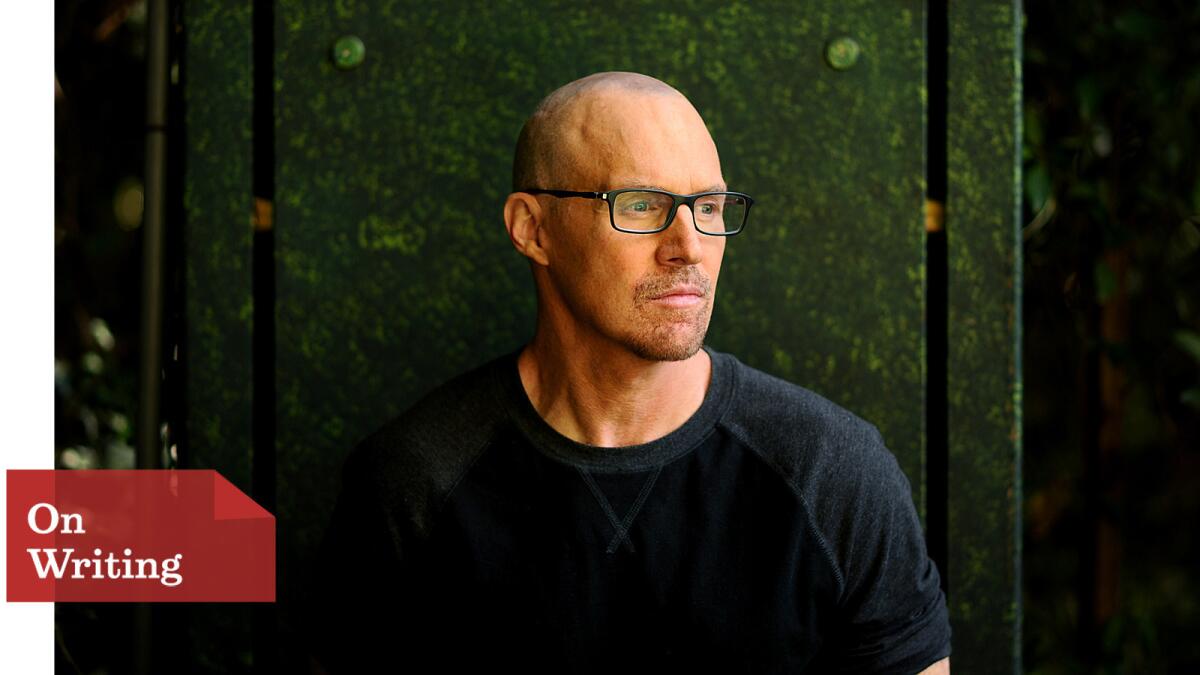The long journey for ‘The Revenant’

- Share via
Management company Anonymous Content sent me Michael Punke’s wonderful novel, asking if I’d be interested in going to studios to pitch the film version. I loved the story, so I played out the pitch in my head … 1820s American wilderness … filthy trappers hidden behind beards and furs … our lead character will have most of his body torn apart by a grizzly bear … the environment is a vital character in the story, so there’s lots of snow and ice and cold … lots of it… oh, and there will be at least 30 straight minutes without a single word of dialogue spoken. That’s as far as I got before I imagined the faces of all the studio executives reacting to this amazing opportunity I was offering. I immediately called Anonymous and said, “Maybe I should write this on spec instead.”
So that’s what I did. I was excited about the challenge of writing almost a silent film, making the action and visuals so powerful that, hopefully, everyone would forget nobody was saying anything. And I’m a notoriously terrible outliner, so I just started jotting down random, action-heavy visuals — a lengthy opening battle scene to grab the reader, a crazy wild bear attack, a horse and rider being chased off a cliff, two men fighting to the death on an icy river. Then I was able to focus on the quieter moments, which would become my favorites — starving frontiersman Hugh Glass pretending a stick is a rifle as he aims it at an unreachable elk, a dying Glass seeing the image of his lost son standing over him, willing him to continue his fight.
And once I had the world in my head, I made sure my version of Hugh Glass was worthy of all the insane stuff I was going to put him through. Then I started writing, and the script just flowed — the characters, story, everything. I turned the script in and Anonymous loved it.
Within a couple weeks, they attached a director and actor. It was crazy how fast it was falling into place. The project was setting some kind of Hollywood land-speed record for going from script to screen. I couldn’t believe how lucky I was.
That was 2007.
The following years were a Hugh Glassian journey of Hollywood pain and survival. Every few months I’d get word that another amazing director or actor had attached and that the project was on the verge of happening, only to soon find myself riding that hope and good luck off a cliff like a runaway horse.
Then in 2010 Alejandro joined the fray, and a new exciting energy swept over everything. He’d read my most recent draft (my 12th … 13th … 20th? I’d lost count by then) and said he’d like us to work on a new draft together. I’d never collaborated with another writer before, but this was Alejandro Gonzales Inarritu, so I think I said yes before he even finished his offer.
I was confident in the collaboration because we were both passionate about the core idea that this wasn’t just a revenge story. Revenge was only the spark that ignited an exploration into the will of the human spirit. This was a story of fathers and their children — of love, life and spirituality in a dangerous, frozen world that hadn’t been shown on screen very often before.
And we both wanted Glass’ journey to be authentic and visceral, so that we could see and feel what he was going through without having to hear the words… Zen and the Art of Human Survival.
Working with Alejandro will always be one of my favorite experiences and our end result is as true a partnership as I can imagine. Pieces of each of us are in every scene. And those scenes are brought to life onscreen with such incredible skill by Alejandro, Chivo [cinematographer Emmanuel Lubezki], Leo DiCaprio, and the entire cast and crew, that now, eight years after finishing that first draft, I still can’t believe how lucky I am.
More to Read
The biggest entertainment stories
Get our big stories about Hollywood, film, television, music, arts, culture and more right in your inbox as soon as they publish.
You may occasionally receive promotional content from the Los Angeles Times.









